When Elephants Carried Bodies...
Rekindling memory of the Sepoy Mutiny
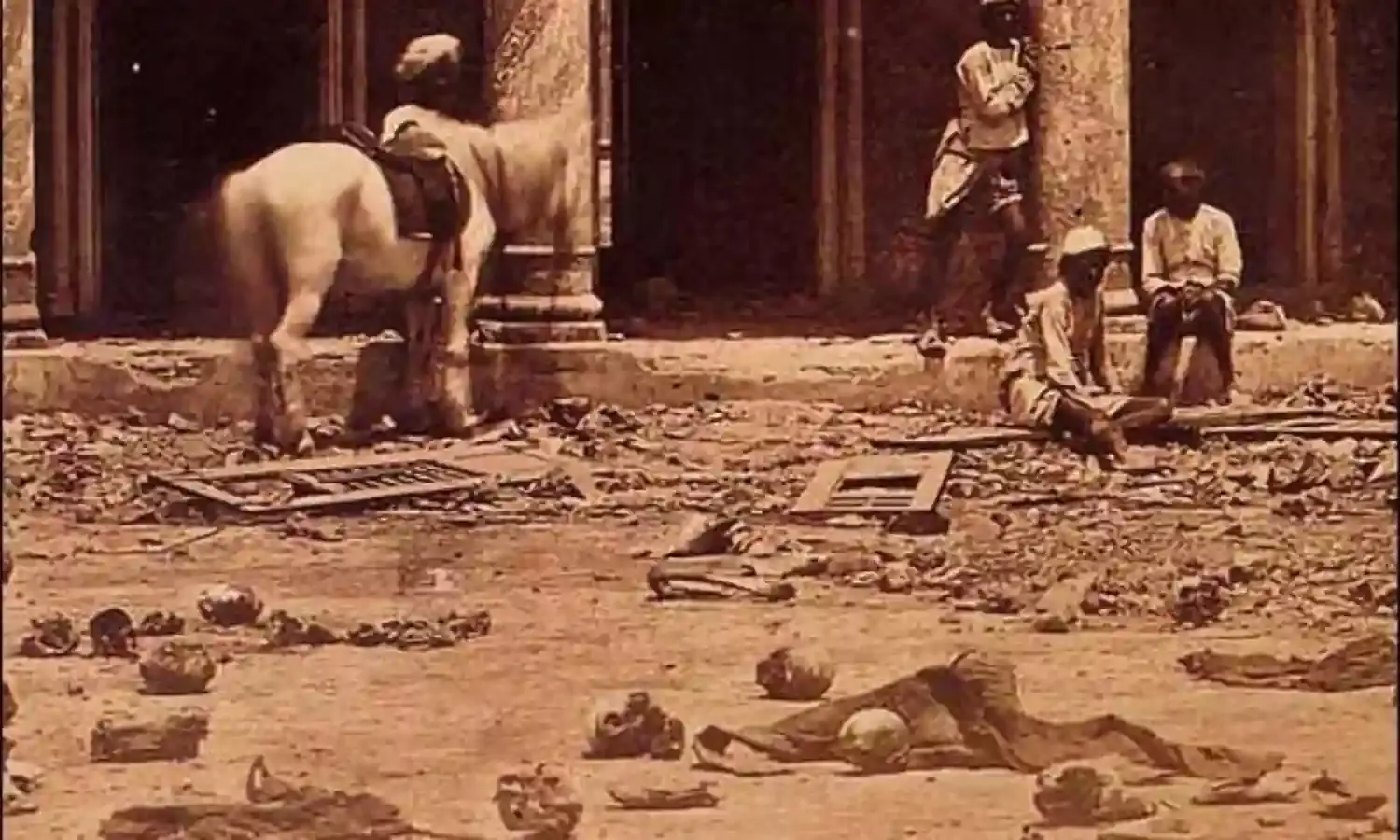
Nestled in Lucknow, the Sikandar Bagh may today appear like any other mohalla of this beautiful Nawabi City but this was the place where the battle in 1857 was so fierce that at least 2,000 Indian sepoys or Sowars were killed by the British East India Company.
This is the official figure of casualty given by the Company in 1859 but the actual numbers of deaths were unofficially put at double this number by contemporary Hindustani chroniclers.
We can guess the true number by the fact that the Company had to use elephants to remove the bodies. In fact, this was the only place where the Firangis used elephants since the number of dead happened to be very high.
Now, Sikandar Bagh has just been catapulted into the media box!
The reason is the National Monuments Authority or NMA has just released drafts of heritage byelaws under which the illegal construction in the vicinity of protected archaeological sites like Sikandar Bagh cannot be allowed.
Besides, the unauthorized concrete structures mushrooming over the decades are also going to be demolished. Sikandar Bagh is one of the 10 historic structures dotting Uttar Pradesh, Assam, Tripura, Madhya Pradesh, West Bengal and Bihar brought under this bylaw.
With this, the memory of Sepoy Mutiny of Lucknow of 1857 comes alive. Together with it, the chapter of war correspondence, war photography and conflict reporting for newspapers from Lucknow by Felice Beato and W.H Russell resurfaces too.
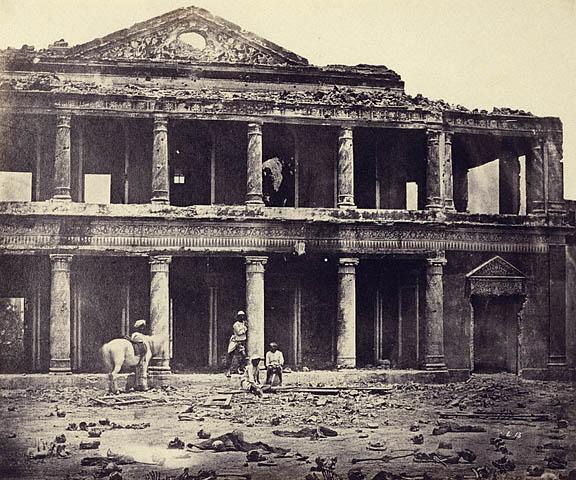
Sikandar Bagh after the raid by the East India Company (photographed by Felice Beato)
Sikandar Bagh, one of several strongholds of the Sowars of Begum Hazrat Mahal, dominated the contemporary Indian, British and US newspapers due to massive skirmishes between the Sowars and the British troops. The reporting spanned nearly two years beginning in 1857.
This particular place of Lucknow is also very important to showcase woman power: a large number of women under the leadership of Begum Hazrat Mahal, wife of Awadh Nawab Wajid Ali Shah, fought pitched battles against the Firangis here.
The contemporary newspapers in Hindi, Urdu and English reported the fight that the women fought at Sikandar Bagh. Hence, the NMA efforts to save this place from illegal encroachment and beautify it may once again revive the role that Begum Hazrat Mahal and her women’s brigade played in the Mutiny of 1857.
Sikandar Bagh after partial restoration by the ASI
The recent NMA heritage bye-laws may go a long way in saving the 3,690 protected sites under the jurisdiction of the Archaeological Survey of India. Most of these precious sites have suffered damage due to illegal and unregulated construction around them damaging their ancient features, designs and colour of façades.
About 68% of such heritage sites in Lucknow now are suffering due to this. Hence, the new rules of NMA may help protect the original historical sites of this ancient Nawabi city that had taken the shape of a metropolis way back in 1820, before many other Indian cities could take similar pride.
Lucknow is a living page of history. Together with Delhi, Meerut, Benaras, Allahabad, Faizabad, Agra, Kanpur, Gwalior, Patna and Jhansi, Lucknow acted as the main theatre of battle against the East India Company in 1857. In Lucknow, the battle was most fierce at Sikandar Bagh.
The battle continues to live due to the 26 albumen silver prints of photographs taken by the Italian photojournalist Felice Beato. Beato may have been forgotten by the Indians but foreign universities still are carrying out researches on him and his photographs, particularly those of the Sikandar Bagh massacre.
It is believed the War Office in London assigned Beato to come to Lucknow to take the photographs to document the damage to the buildings in the Nawabi city. Of course, Beato risked his life as W.H. Russell did in Lucknow.
Russell was sympathetic to the rebels and his reporting from long ago still proves this. Anyway, it was not unnatural that the British did not like him for it. A section of the British still feel that Russell, being Irish, supported the freedom fighters who the East India Company termed as Bagis: rebels.
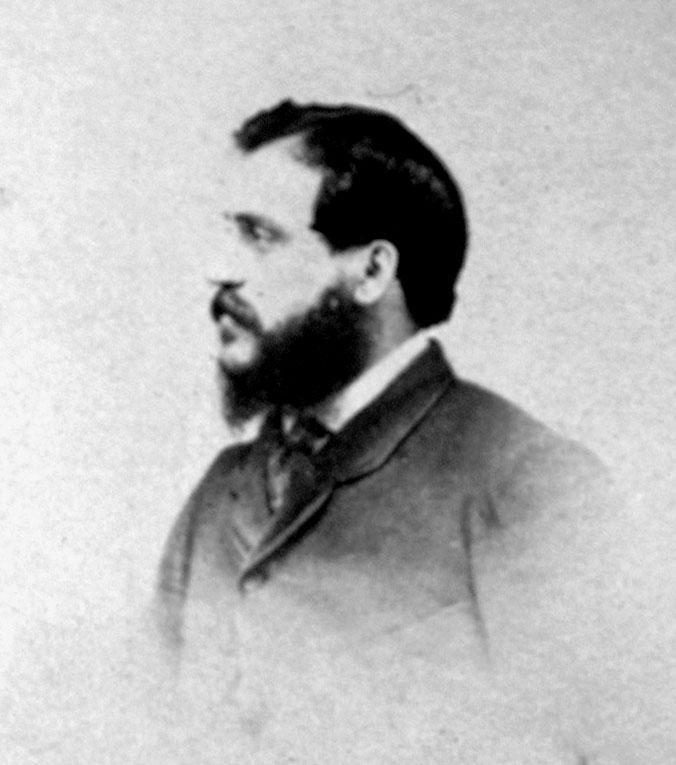
Felice Beato
Beato, arriving in Lucknow in March 1858, took 60 photographs of Sikandar Bagh and other places in Lucknow including the recapture of the city by Sir Colin Campbell. Beato, however, is still being accused of creating the first photographic sensationalism of Sikandar Bagh, as his most famous photograph shows a large number of human bones, skulls and skeletal bodies lying strewn around the building.
The origin of this first Indian scandal of photojournalism seems to be the diary of Sir George Campbell, a top army officer of the East India Company. He entered in his diary that Beato probably had the human remains of Sowars or native Bagis excavated and strewn around the campus of Sikandar Bagh.
But in his reporting appearing in The Times (of London), W.H. Russell claimed in April, 1858 that the skeletons lay in the ground adjoining Sikandar Bagh. Hence, Beato might have photographed the exact scenario. In any case we cannot forget the fact that elephants were used for the first time in 1857–58 to remove the bodies of the soldiers who died fighting at Sikandar Bagh.
Why does Sikandar Bagh still tantalise the memory of the Lucknowis as well as the British?
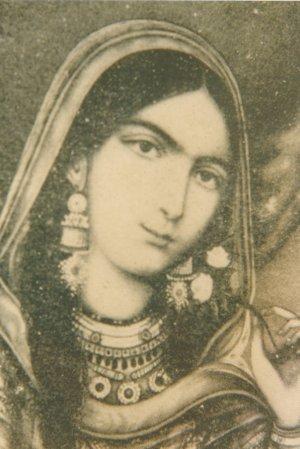
Begum Hazrat Mahal
Sikandar Bagh, supreme example of the heroic war of Begum Hazrat Mahal and the sacrifice of Hindustani Sowars, still remains under-evaluated even as the Government of India frequently sites 1857 for its various political purposes.
However, it is time we have a glimpse of what actually happened at Sikandar Bagh on the morning of November 16, 1857. Let us have a look at it!
On that morning, the British soldiers suddenly were forced to stop while moving through Lucknow. Heavy fire coming from Sikander Bagh stopped them. The Firangi soldiers of Bengal Horse Artillery were moving through a small lane of the Sikandar Bagh area. Hence, they were trapped. They could neither advance nor move back.
But a daring Firangi officer, mentioned in the documents simply by the name Blunt, led his troops into an open space to the east of Sikandar Bagh braving the constant fire of Bagis, mostly women.
Call it the lack of political will or apathy by a certain section of historians, Sikandar Bagh has never been showcased as the symbol of the famine-fight against the East India Company in the Mutiny of 1857.
But it indeed is the symbol of how Begum Hazrat Mahal trained women in guerilla warfare and moved them to take up arms alongside their male fighters. One such lady trained under the Begum in guerilla warfare was Uda Devi, believed to have sniped over six British soldiers from a tree.
Mind you, this was done by the Begum when almost all women in Oudh (and contemporary Hindustan) were Purdahnashin: remaining indoors or behind a veil.
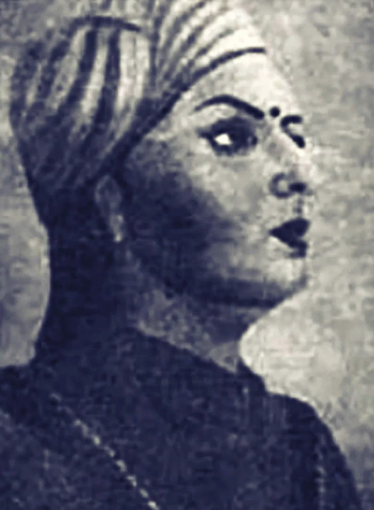
Uda Devi
Wife of Makka Pasi, a soldier of the Begum, Uda Devi’s role as a sniper proves the fact that she was extremely well-trained. The Begum helped her form a women’s battalion under her command. Both Makka and Uda were instrumental in the resistance fight against the Firangis at Sikandar Bagh.
In fact, the Sikandar Bagh battle establishes the fact that Begum Hazrat Mahal was a military strategist and used hit-and-run and guerilla warfare to a great success in 1857-58. Besides, she also trained the women like Uda Devi to act as snipers often hiding them in ditches, tree-tops and by the riverside like modern day snipers.
The Begum asked Uda Devi to form her own suicide squad of sorts and fight against the Company. The aspect of the Begum as a military strategist can be gauged from a published diary, Reminiscences of the Great Mutiny by William Forbes-Mitchell who was under attack by Uda Devi at Sikandar Bagh.
The information Forbes-Mitchell gives us proves that Begum Hazrat Mahal, perhaps, was the first Indian to use her own female snipers with Uda Devi being their trainer and leader. He wrote how she kept on shooting the Firangis lying hidden in a large Peepal tree at Sikandar Bagh…
Forbes-Mitchell was a Sergeant in the 93rd Sutherland Highland Regiment, which suffered many casualties following Uda Devi’s accurate marksmanship. It was this man who killed the right-hand women’s brigade commander of the Begum. In his diary turned into a book, Forbes-Mitchell gives us a picture of how Uda Devi was killed at Sikandar Bagh.
During the Sikandar Bagh battle he found that most of the soldiers killed in the mysterious fire suffered bullet wounds indicating a steep downward trajectory. It made him realize the shots must have been coming from the nearby Peepul tree.
Doubting that the sniper was in that tree, he ordered his men to fire indiscriminately at all the trees. As a result, a woman fell dead to the ground. “She was armed with a pair of heavy old-pattern cavalry pistols, one of which was in her belt still loaded, and her pouch was still about half full of ammunition, while from her perch in the tree, which had been carefully prepared before the attack, she had killed more than half-a-dozen men.”
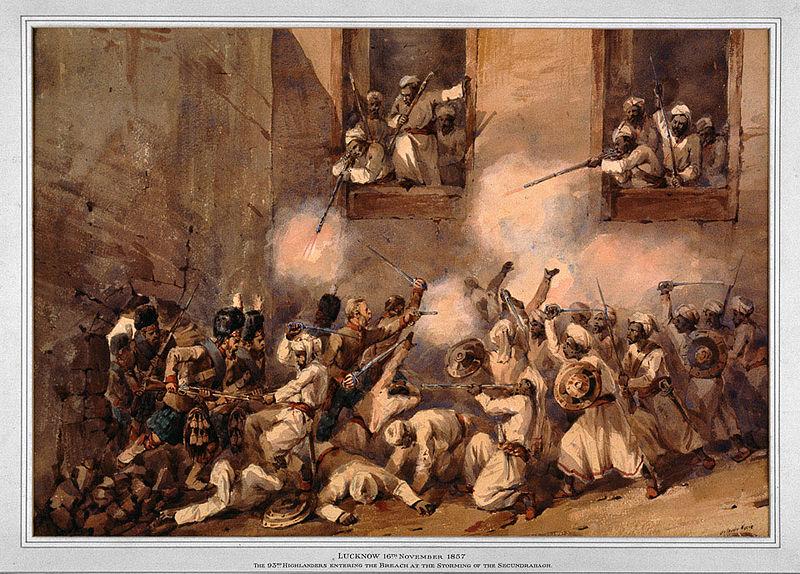
‘93rd Highlanders Entering Sikandar Bagh’
Forbes-Mitchell officially claimed Uda Devi had killed six Firangis but the contemporary accounts of Urdu dailies in 1857 say she might have killed 32 Firangis. Forbes-Mitchell might have purposely underplayed the role of Uda Devi as a fierce commander of the army of Begum of Oudh.
She was Uda Devi, the diva of Sikandar Bagh of 1857.
The records of two other British army officers - Lieutenant Paul and Lieutenant McQueen - say that over 2,000 men and women Bagis of Begum Hazrat Mahal’s army were killed at Sikandar Bagh.
Hence, it is really heartening that the NMA is bringing new bylaws to protect Sikandar Bagh and its adjoining areas with the help of the ASI where those 2,000 Baghis were killed by the British East India Company during the 1857. Such protection should have come long ago, but did not.
At last, it has come. That is great.
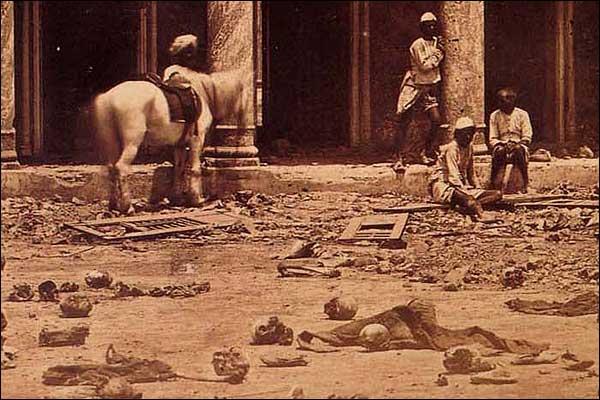
Skeletons of Baghis as claimed by Felice Beato



